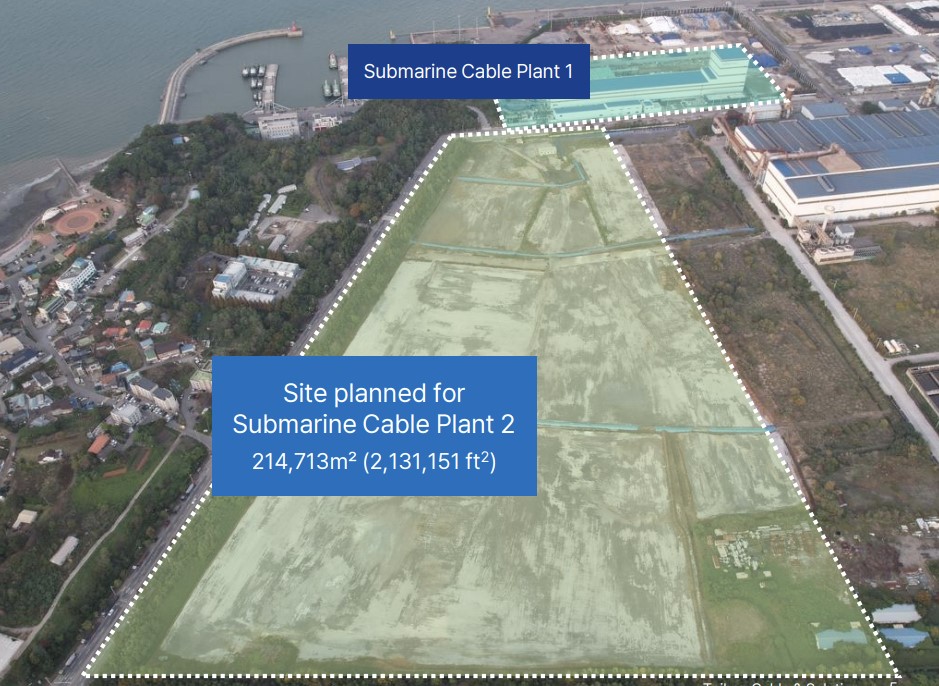South Korean Taihan Cable & Solution plans to construct a second submarine cable manufacturing facility next to its existing plant, which began operations earlier this year.
In May, Taihan launched the first phase of its initial submarine cable plant, focusing on inter-array cables, covering around 44,800 square meters behind Godae Pier at Pyeongtaek’s Dangjin Port. The plant produces cables for the South Korean Yeonggwang Nakwol offshore wind project.
The second phase, featuring export cable production facilities, is 40% complete and aims for completion by the first half of 2025. It will include vertical continuous vulcanization (VCV) facilities for export and HVDC cable production.
Taihan has acquired approximately 215,000 square meters in Dangjin’s Godae District, Chungcheongnam-do, for the new facility.
The new plant will have a VCV tower, enabling the production of up to 620 kV HVDC and export submarine cables. Taihan chose the site to address increasing submarine cable demand and consider facility expansion.
Construction will begin in the first half of 2025 and is expected to finish in the first half of 2027.
“The site is strategically located near our first submarine cable plant and key production facilities, forming the largest cable manufacturing cluster in South Korea,” stated Taihan.
“Dangjin, Chungcheongnam-do, serves as a key logistics hub and hosts Taihan’s integrated production infrastructure. This includes the world’s largest cable plant, the Solution Plant for cable accessories, and Submarine Cable Plant 1, pivotal for the offshore wind farm industry. The addition of Submarine Cable Plant 2 enhances our capabilities.”
Taihan announced in December 2023 the acquisition of Korea’s only cable-laying vessel for the offshore wind market. Purchased for approximately USD 38.4 million, the vessel features self-propulsion, a DP2 system, and can carry up to 4,400 tonnes of underwater cables.
The commissioning ceremony was held in July.
Original Story at www.offshorewind.biz
